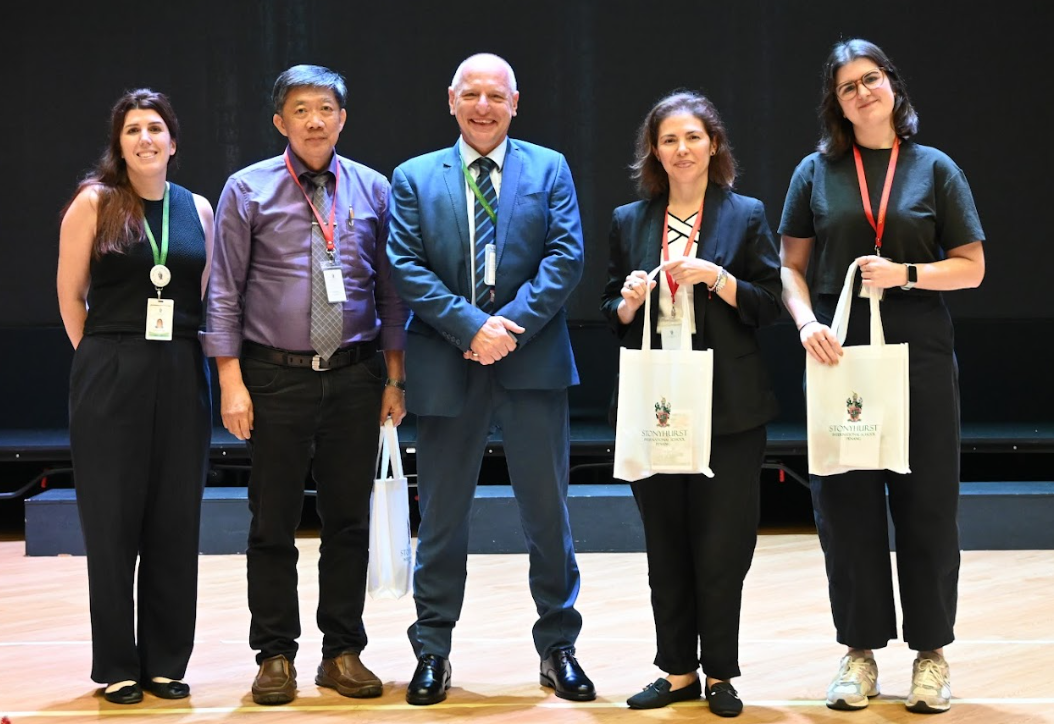
1. Structured as the Cambridge Pathway
The Cambridge International Curriculum was introduced by Cambridge Assessment International Education, a globally recognised provider of international qualifications. This curriculum shapes an individual’s education from age five to 19 and allows them to focus on subjects based on their strengths and interests. The curriculum’s structure is known as the Cambridge Pathway and consists of Cambridge Primary (5 to 11 years old), Cambridge Lower Secondary (11 to 14 years old), Cambridge Upper Secondary (14 to 16 years old) and Cambridge Advanced (16 to 19 years old).
2. Bounded by five elements
Five elements define the Cambridge education which are international curriculum, teaching, learning, assessment and international recognition. Its international curriculum is constantly updated through expert international school research and consultation with schools. In terms of teaching and learning, teachers are expected to guide their students to become confident, engaged and independent learners. Next, assessment in the Cambridge International Curriculum is fair, valid and reliable. In addition, Cambridge qualifications are internationally recognised by higher education institutions all over the world.
3. Students are assessed through Checkpoints
Students’ academic progress are assessed through Checkpoints at the end of Cambridge Primary and Cambridge Lower Secondary. Both Cambridge Primary Checkpoint and Cambridge Lower Secondary Checkpoint assess students’ proficiency and ability in English, English as a second language, mathematics and science. These checkpoints provide teachers with an international benchmark to measure their students’ progress and tailor individual learning programmes. Furthermore, a feedback report is created based on each student’s results which enables detailed and structured reporting to their parents.
4. Cambridge IGCSE & O Level
Students in Upper Secondary usually sit for either the IGCSE or O Level examinations. More than 70 subjects are offered at Cambridge IGCSE which includes 30 languages. Schools which provide the Cambridge IGCSE can offer subjects to their students in any combination. The Cambridge O Level qualification is equivalent to the Cambridge IGCSE and UK GCSE. Both IGCSE and O Level are assessed through oral tests, coursework and practical assessments. In addition, IGCSE and O Level are internationally recognised secondary school leaving qualifications, and are accepted as entry requirements to most pre-university programmes worldwide.
5. Cambridge A Level
The most popular pre-university route for those who complete the IGCSE or O Level is the Cambridge International A Level. It is typically a two-year course where students study three or four subjects in the areas of Science, Arts, Humanities and many more. The content of each A Level subject is divided into AS syllabus which is covered in the first half of the course and A2 in the second half. Students have the option to sit for all their papers at the end of the course, sit for two final examinations at the end of AS and A2 stages or take the AS as a stand-alone qualification. The A Level is a well-known pre-university programme and a ticket to many undergraduate programmes in universities worldwide.
Looking for an international school that offers the Cambridge International Curriculum? Use the powerful School Finder now!
You may also be interested to read:
- 5 Things You Should Know About the American Curriculum
- 5 Things You Should Know About the British Curriculum
- 5 Things You Should Know About the International Baccalaureate Primary Years Programme (IB PYP)
- 5 Things You Should Know About the IGCSE in Malaysia
- 5 Things You Should Know About the Ontario (Canada) Curriculum
- 5 Things You Should Know About the Victorian Curriculum (from Australia)


































